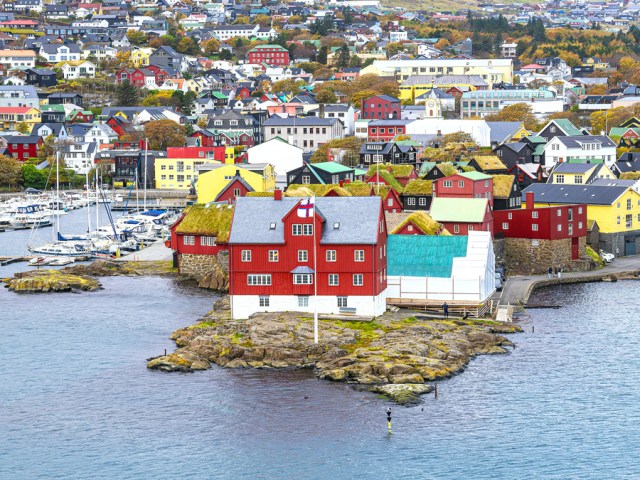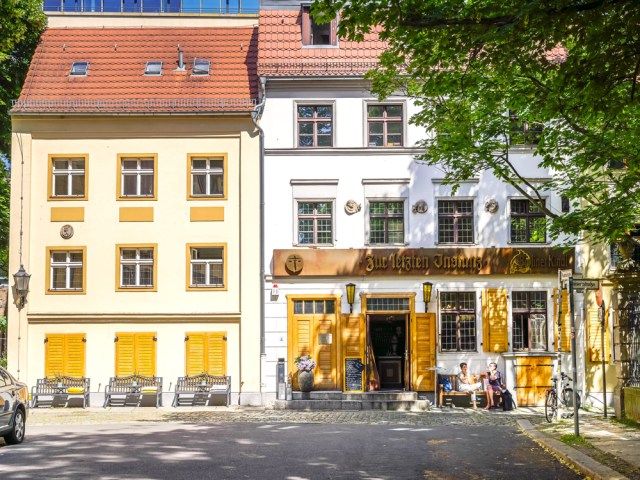Isolated in the Pacific Ocean some 2,200 miles off the coast of Chile, Easter Island is perhaps one of the world’s most enigmatic destinations. Historians believe Easter Island’s original settlers arrived from Polynesia sometime between 700 and 800 CE. In 1722, Dutch explorer Jacob Roggeveen was the first recorded European to visit the island. Since he arrived on Easter Sunday, he named it Easter Island. Standing for centuries, the unusual giant “moai” statues that dot the island still intrigue historians and beguile curious visitors. But they only scratch the surface of the fascinating history of Easter Island and its Rapa Nui peoples. Below, discover seven interesting facts you might not know about Easter Island.
The Moai Have Their Backs to the Sea
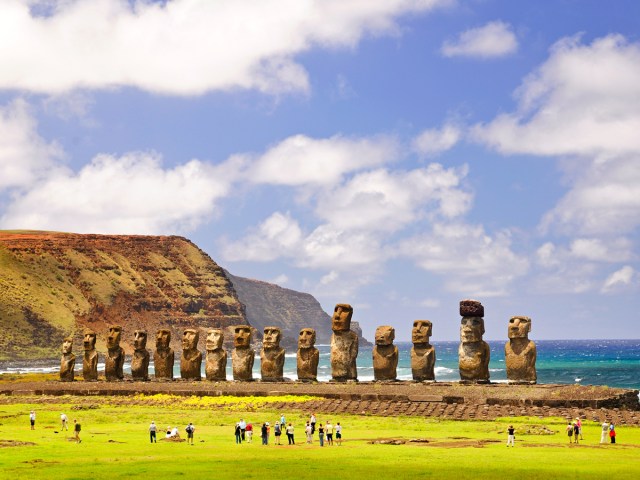
The island is home to around 900 or so moai (pronounced “mo-eye”), which means “statue” in the Indigenous language of the island. The ceremonial stone figures, which were likely built between 1400 and 1650 CE, were transported to and placed on ceremonial platforms called ahus. At first, they appear to be giant heads, but upon closer inspection you’ll notice that their bodies are sunken into the ground. Bodies and heads included, they measure an average of 13 feet tall, but many weigh more than 10 metric tons.
Observant visitors will realize that the moai almost always have their backs to the sea. However, if you venture inland to Ahu Akivi, the moai are facing the other direction. Some historians theorize the reason for this is because the figures represent the first Polynesians to discover the island, so they were aligned to face their homeland. Others have noted that they line up with certain stars at the time of the spring and autumn equinoxes. In A Companion Guide to Easter Island, James Grant-Peterkin asserts that the moai were always placed to watch over the village to which they were attached — which, in this case, used to lie between the stones and the sea.
A Single Space Makes a Difference
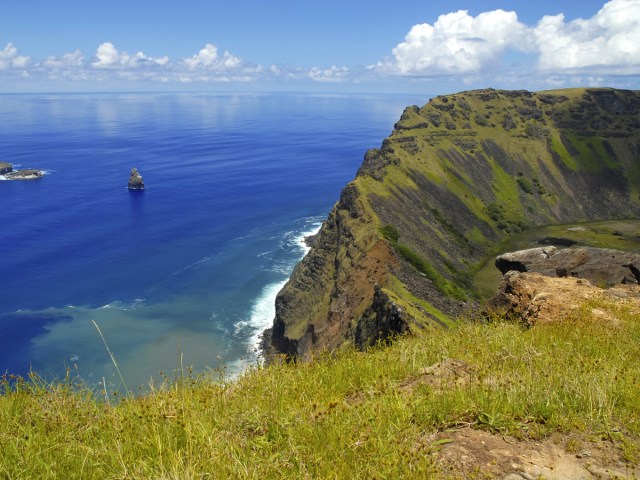
If you’ve ever researched Easter Island, chances are that you’ve probably come across the name Rapa Nui. Although many assume this is the native name for the island, it was first recorded in 1863. It’s a Polynesian name that translates to “Big Rapa,” in comparison to French Polynesia, which is called “Rapa.” These days, the islanders prefer to use Rapa Nui when talking about their island — rather than Easter Island or Isla de Pascua, the name used by mainland Chileans. Confusingly, if you see the word Rapanui in print (all one word and no space), it refers to the people themselves and not the island.
The Rapa Nui language has just 10 consonants, compared to the 21 consonants of the English language. Spoken by roughly 3,000 people (most of whom reside on the island), Rapa Nui is eastern Polynesian in origin and similar to Maori. However, since Easter Island is a Chilean territory, many residents also speak Spanish.
It Was Once the Site of a U.S. Satellite Tracking Station

From 1966 until 1970, Easter Island was home to a U.S. satellite tracking station. Americans wanted to keep an eye on Russian naval movements during the Cold War, and Easter Island’s remote location was ideal for maintaining secrecy. The U.S. built the first local hospital and gave the island its first proper runway, which paved the way for a regular schedule of commercial flights from Chile. However, in 1970, socialist president Salvador Allende rose to power and expelled U.S. troops from the island. The island’s airport remains one of the most remote airfields on Earth.
Broken Moai Were Abandoned
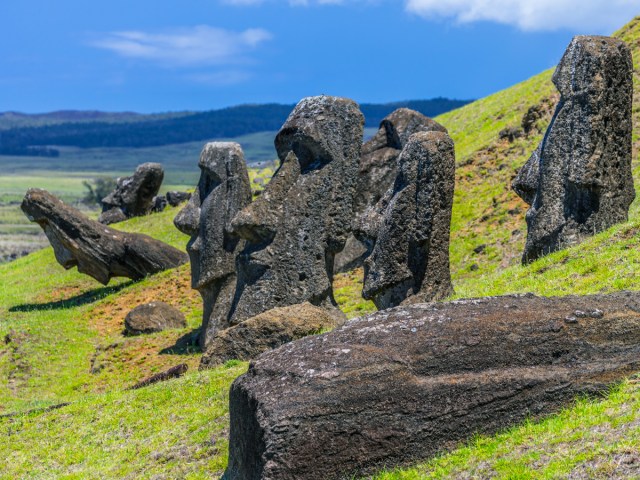
The rock found in Rano Raraku quarry is actually a type of tuff. The stone is made of hardened volcanic ash, but is still much softer than the basalt found across most of the island. Although the rock’s composition made it easy to quarry, it was also very fragile and breakable. A master carver would have overseen the creation of each new moai, a process which could take as long as two years. If a moai accidentally broke, it was left where it fell, since it was believed that the figure’s mana, the spiritual energy that translated to its power, was gone for good.
The Eyes of the Moai Are Significant
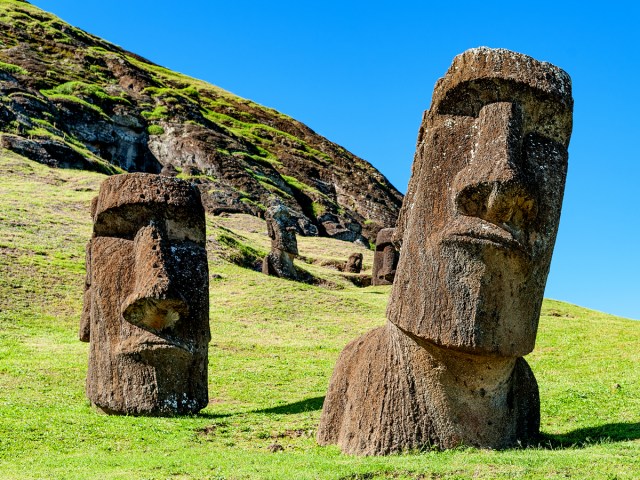
The eyes of the moai fit inside carved eye sockets. However, when the moai were hewn from the quarry at Rano Raraku, they had no eye sockets. In fact, sockets were only carved after the moai had been transported to the ahu platforms where they would be installed. The sockets were angled so that they looked up to the sky. Coral represented the whites of the eyes, while the iris was a piece of obsidian or red scoria. A ceremony was carried out to open the eyes of the erect moai — freeing the ancestor’s spirit to be brought back to life.
Another distinguishing feature to look out for on the moai is the length of their ears. Earlobe elongation was a popular trend among islanders. When Captain James Cook visited Easter Island in 1774, he noted that if they had to run, they would sometimes loop them over the top of the ears to keep them out of the way.
The National Park Has a Lot to Offer
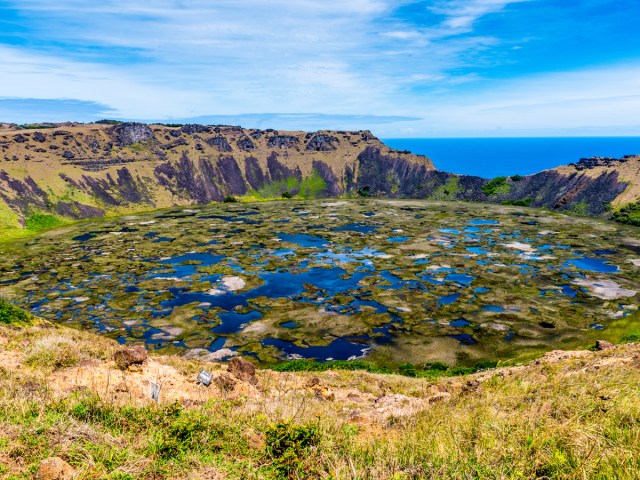
In addition to the famous moai statues, the breathtaking Rano Kau is arguably the most extraordinary sight on the island. This extinct volcanic crater measures an impressive mile in diameter. On the wall closest to the ocean, a giant bite known as the Kari Kari is the result of heavy erosion. Vivid green reed mats float on the azure crater lake — making this an astonishingly colorful sight. Vines, fig trees, and bougainvillea all thrive inside the crater and are protected from the wind by its steep sides.
The “Wild” Horses Aren’t Actually Wild
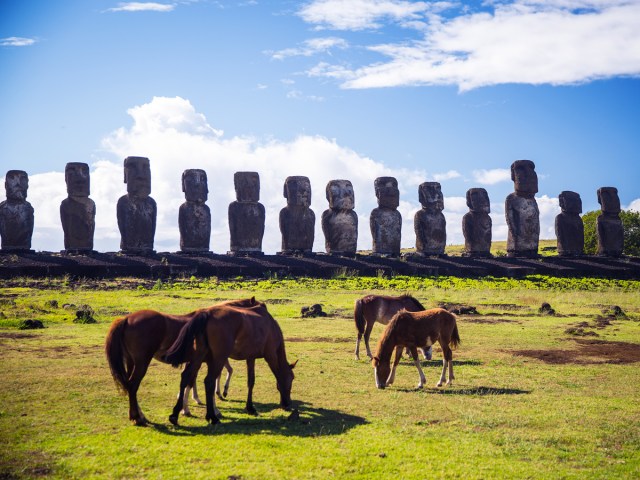
You don’t have to drive very far on Rapa Nui before you encounter some of its equine population. Catholic missionaries introduced horses in the 19th century, and there are now an estimated 3,000 of them roaming on the island. Each horse is branded and belongs to someone. Sometimes you’ll see them galloping along the roads, and a few are available to ride. If you see them grazing beside the moai, the island authorities suggest you gently encourage them to move along, since their hooves can damage the stones.











